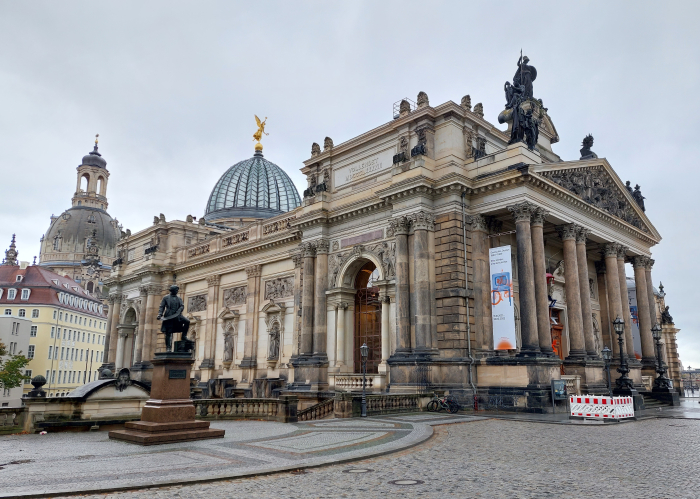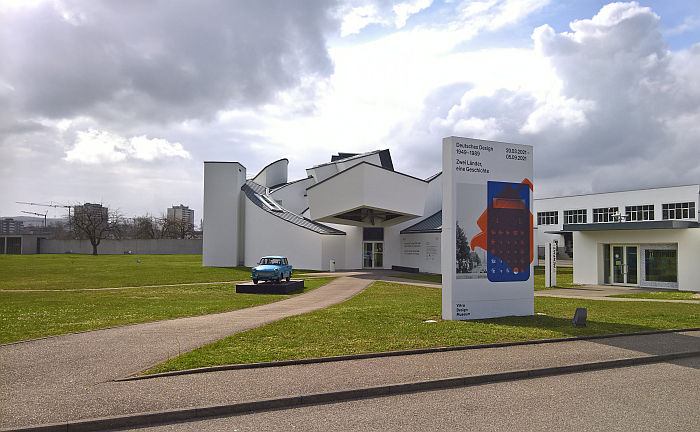German Design 1949–1989. Two Countries, One History at the Kunsthalle im Lipsiusbau, Dresden
Whereas politics, economics or sport in West Germany and East Germany are well and widely studied, and the similarities and differences regularly and publicly analysed and contextualised, thereby allowing for more refined, nuanced, popular understandings; design in and from the two Germanys remains, largely, a niche subject for a small band of specialists, and on a popular level something not only repeatedly reduced to a few works, institutions and protagonists, but also defined by understandings that, popularly, have barely changed since 1989.
With the exhibition German Design 1949–1989. Two Countries, One History the Kunstgewerbemuseum Dresden challenge those ingrained understandings and thereby allow for the development of more differentiated and detached perspectives……
German Design 1949–1989. Two Countries, One History at the Vitra Design Museum, Weil am Rhein
In the final decades of the 19th century the lands of the, then, German Empire, established themselves amongst the leading protagonists in the developments of contemporary applied arts as they moved towards that which we today term design. A leading position which, in certain regards, became a European dominance in the course of the 1900s, 1910s and 1920s through the contributions made to the evolving practices, processes, expressions and understandings of the period by institutions such as, and amongst many others, the Deutsche Werkstätten Hellerau, the Deutsche Werkbund, the Frankfurt city building authorities and, and perhaps most famously, the Bauhauses.
Then, as so oft in 1920s Europe, came the 1930s, the War and subsequently the establishment within (part of) the lands of the, former, German Empire two new nations: West Germany and East Germany.
And what became of the design understandings and approaches that had developed and evolved in that region over the previous half century?
That, to misquote Hamlet, is one of the questions the Vitra Design Museum pursue in German Design 1949–1989. Two Countries, One History.
5 New Architecture & Design Exhibitions for March 2021
Following the declaration of the French Republic in 1792 a new calendar was introduced in the realms of France: the Revolution had washed away France past and the Republic marked the start of a new reality for mankind, one of universal Liberté, Égalité, Fraternité, and therefore demanded a resetting of the collective clock, a new measuring of time, and thus out went the Gregorian calendar and its historic associations with church and state, and in came le calendrier républicain, the French Republican Calendar.
And while, yes, one can consider the belief amongst the new republicans in the eternal gloriousness of the coming future as somewhat naive, one must remember that we can reflect on their optimism with the benefit of over 200 years hindsight and experience.
The argument for a new calendar appears however as compelling and self-evident as it must have done at its adoption on October 24th 1793. Or 3 Brumaire II, as we believe le calendrier républicain would date the day of its adoption.
Aside from its ten day week, an early attempt at bringing decimalisation to our time keeping, and the bequeathing of every day its own unique name, the principle difference between the Gregorian and Republican calendars is the move from the 12 months of varying lengths inherited from the Romans to twelve months each comprising thirty days, three ten day weeks, and the renaming of the months to give them a connection to nature rather than to Romans: the period between 19/20th February and 19/20th March, that period in which we find ourselves at the time of writing, being known as Ventôse, from venteux, windy, and was preceded by Pluviôse, rainy, and followed by Germinal, germination
Which all strikes us as particularly apposite as we move towards the next phase of our post-pandemic society; as a fresh wind blows the global rain clouds away and ushers in a period of re-birth and springing forth. Yes, such optimism may be as naive as that of the French revolutionaries, but we have a much better understanding of history today, and for all a much better understanding of the sense and logic in, utter necessity of, making use of the myriad lessons of history in order to avoid the pitfalls and follies of the past, and to allow us to chart an untroubled course forward……oh…..hang on……
Although, now is as good a time as any to start. The theory is known, we just need to move into the practice. And so given that all nations and all peoples have had their Corona tribulations should we not think about re-setting our global clocks, starting afresh at a new global year zero for a new global society?
We’ll leave others more qualified than us to work out the practicalities and technicalities, and decide on the basis of the nomenclature, and instead recommend here four new exhibitions scheduled to open in Germinal CCXX, and thus, one hopes, once the winds of Ventôse have begun to do their job, and also recommend a radio station that’s been online since the rains of Pluviôse….


